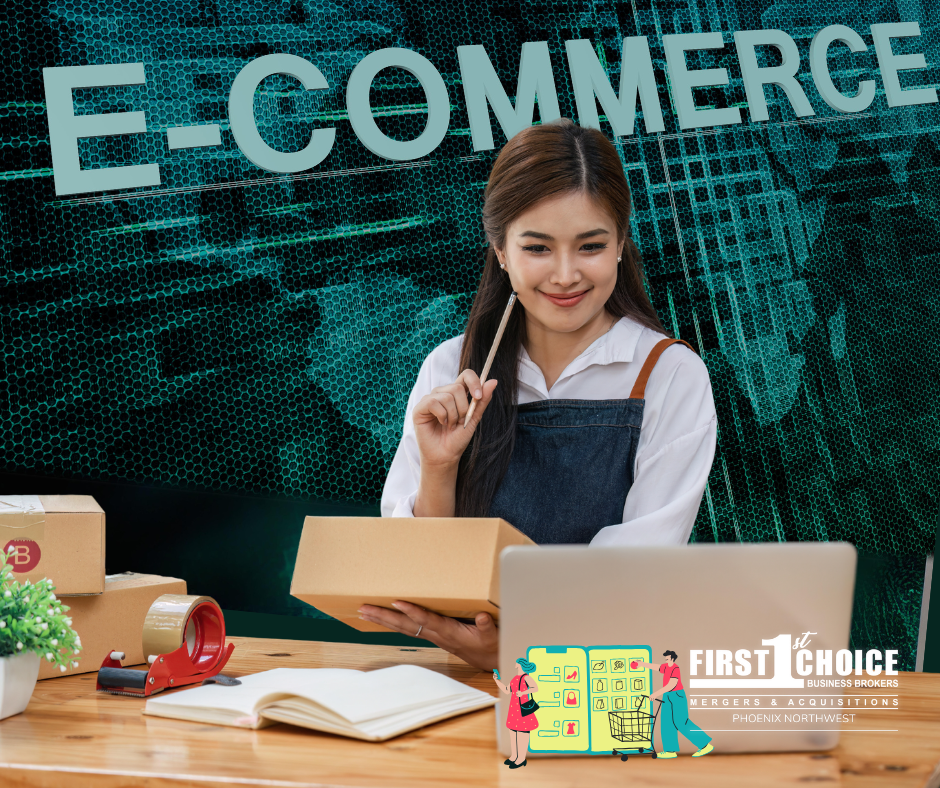E-commerce Innovations 2024: Essential Tips to Thrive

The e-commerce landscape is evolving faster than ever in 2024, with new technologies and consumer preferences reshaping the industry. As a business broker, I've seen how these changes can provide both opportunities and challenges for businesses looking to thrive online. From social commerce to advanced AI personalization, staying ahead of these trends is crucial for success. This blog will explore the latest e-commerce innovations and provide essential tips to help your business navigate and excel in this dynamic marketplace. Let's dive into the key trends and strategies you need to know to stay competitive and grow your online presence.
Key Takeaways
- Leverage social commerce to expand your customer base on platforms like Instagram and TikTok.
- Embrace sustainability to attract eco-conscious consumers and build brand loyalty.
- Integrate AR and VR technologies for an immersive shopping experience.
- Optimize your logistics for fast delivery to meet customer expectations.
- Use AI for hyper-personalization to enhance customer engagement and increase sales.
Social Commerce: The New Frontier
Social media platforms have evolved into powerful e-commerce channels. With features that allow direct purchases, platforms like Instagram and TikTok offer businesses unprecedented access to vast audiences. By creating engaging content and leveraging influencers, businesses can effectively drive traffic and sales.
Tips for Leveraging Social Commerce:
- Create Engaging Content: Use high-quality images and videos to showcase your products. Storytelling can make your brand more relatable and memorable.
- Collaborate with Influencers: Partner with influencers who align with your brand values and have a significant following among your target audience. This can help amplify your reach and credibility.
- Use Platform Features: Utilize shopping features on platforms like Instagram Shopping and TikTok’s Shopping Ads to provide seamless purchasing experiences.
Example: A beauty brand could collaborate with a popular TikTok influencer to showcase a makeup tutorial, with direct links to purchase the featured products. This strategy not only boosts visibility but also drives sales directly from the platform.
Sustainability: More Than a Trend
Sustainability has become a critical factor for consumers. Brands that demonstrate a commitment to eco-friendly practices can attract and retain loyal customers. This includes using recyclable packaging, sourcing materials responsibly, and maintaining transparency in supply chains.
Tips for Implementing Sustainability:
- Eco-friendly Packaging: Switch to recyclable or biodegradable packaging materials to reduce environmental impact.
- Transparent Supply Chains: Provide detailed information about the sourcing of your products and your sustainability practices to build trust with consumers.
- Energy-efficient Operations: Implement energy-saving measures in your production and distribution processes to reduce your carbon footprint.
Example: Patagonia has built its brand around sustainability, appealing to a growing segment of eco-conscious consumers. Their commitment to using recycled materials and transparent supply chains has helped them establish a loyal customer base.
AR and VR: Transforming Shopping Experiences
Augmented Reality (AR) and Virtual Reality (VR) are changing the way consumers shop online by offering immersive experiences. AR allows customers to visualize products in their own space, while VR can create virtual showrooms.
Tips for Using AR and VR:
- Virtual Try-ons: Implement AR tools that allow customers to try on products virtually. This is particularly effective for fashion and beauty brands.
- Virtual Showrooms: Use VR to create an immersive shopping experience that mimics a physical store. This can be especially useful for high-end retail.
- Interactive Product Demos: Create AR or VR demos that allow customers to interact with your products in a virtual environment.
Example: IKEA’s AR app allows customers to visualize how furniture will look in their home before making a purchase, reducing the likelihood of returns and increasing customer satisfaction.
Fast Delivery: Meeting Consumer Expectations
Today's consumers expect quick and reliable delivery. Implementing efficient logistics and partnering with reliable delivery services are essential for meeting these expectations.
Tips for Optimizing Delivery:
- Efficient Logistics: Streamline your supply chain to ensure fast and accurate order fulfillment.
- Partnerships with Delivery Services: Collaborate with reliable delivery partners to offer same-day or next-day delivery options.
- Real-time Tracking: Provide customers with real-time tracking information to enhance their shopping experience and build trust.
Example: Amazon's Prime service, which offers same-day or next-day delivery, has set a high industry standard. Other retailers must adapt by optimizing their logistics to offer similar delivery speeds.
Hyper-Personalization: Enhancing Customer Engagement
AI-driven hyper-personalization tailors shopping experiences to individual customers. By analyzing customer data, businesses can offer personalized product recommendations, exclusive deals, and targeted marketing campaigns.
Tips for Implementing Hyper-Personalization:
- Data Analytics: Utilize AI and machine learning to analyze customer data and predict shopping behaviors.
- Personalized Marketing: Send personalized emails and offers based on individual customer preferences and past purchase history.
- Tailored Shopping Experiences: Customize your website and app experiences to reflect the unique preferences of each customer.
Example: Netflix uses sophisticated algorithms to recommend content based on user preferences, significantly enhancing user engagement. E-commerce businesses can apply similar strategies to boost sales and foster customer loyalty.
Conclusion
The e-commerce landscape in 2024 is marked by rapid technological advancements and shifting consumer behaviors. By embracing social commerce, prioritizing sustainability, integrating AR and VR, optimizing for fast delivery, and leveraging AI for hyper-personalization, businesses can thrive in this competitive marketplace. Staying ahead of these trends will not only enhance customer experiences but also drive growth and success.
FAQ
How can small businesses leverage social commerce?
Small businesses can create engaging content, collaborate with influencers, and use platform-specific shopping features to reach and engage with their target audience on social media.
What are some simple ways to implement sustainable practices?
Businesses can start by using eco-friendly packaging, sourcing materials responsibly, and maintaining transparency in their supply chains to attract environmentally conscious consumers.
How does hyper-personalization benefit e-commerce businesses?
Hyper-personalization enhances customer engagement by delivering tailored shopping experiences, leading to increased sales and customer loyalty through targeted recommendations and exclusive offers.
Get in Touch:
First Choice Business Brokerage Phoenix
📍 21640 N 19th Ave Suite C9, Phoenix, AZ 85027
📞 (623) 888-6190
Recent articles for you




